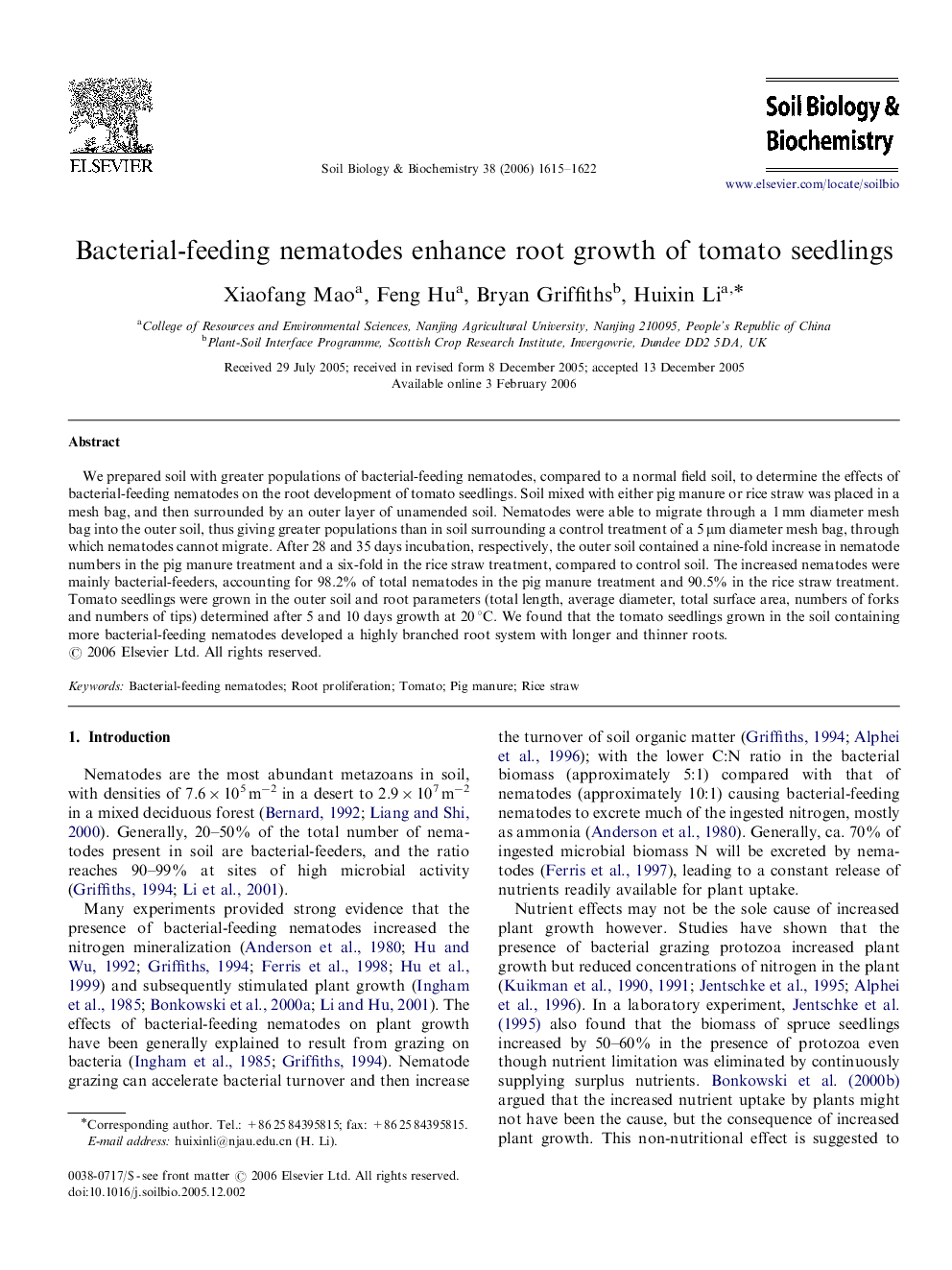| Article ID | Journal | Published Year | Pages | File Type |
|---|---|---|---|---|
| 2026565 | Soil Biology and Biochemistry | 2006 | 8 Pages |
We prepared soil with greater populations of bacterial-feeding nematodes, compared to a normal field soil, to determine the effects of bacterial-feeding nematodes on the root development of tomato seedlings. Soil mixed with either pig manure or rice straw was placed in a mesh bag, and then surrounded by an outer layer of unamended soil. Nematodes were able to migrate through a 1 mm diameter mesh bag into the outer soil, thus giving greater populations than in soil surrounding a control treatment of a 5 μm diameter mesh bag, through which nematodes cannot migrate. After 28 and 35 days incubation, respectively, the outer soil contained a nine-fold increase in nematode numbers in the pig manure treatment and a six-fold in the rice straw treatment, compared to control soil. The increased nematodes were mainly bacterial-feeders, accounting for 98.2% of total nematodes in the pig manure treatment and 90.5% in the rice straw treatment. Tomato seedlings were grown in the outer soil and root parameters (total length, average diameter, total surface area, numbers of forks and numbers of tips) determined after 5 and 10 days growth at 20 °C. We found that the tomato seedlings grown in the soil containing more bacterial-feeding nematodes developed a highly branched root system with longer and thinner roots.
